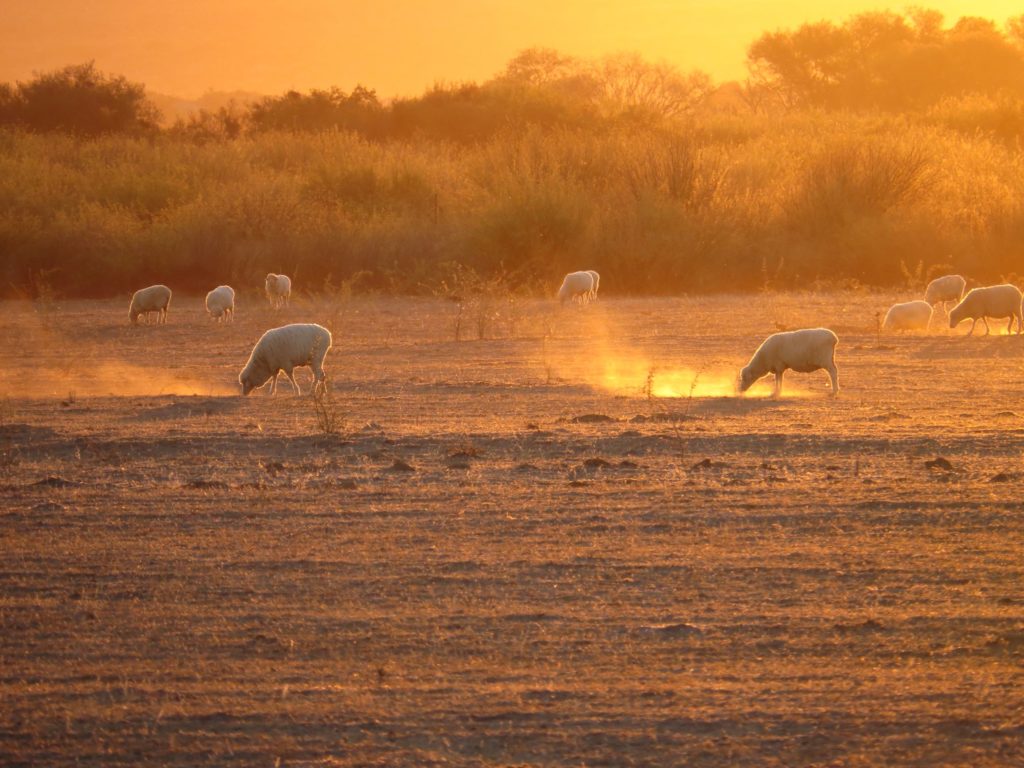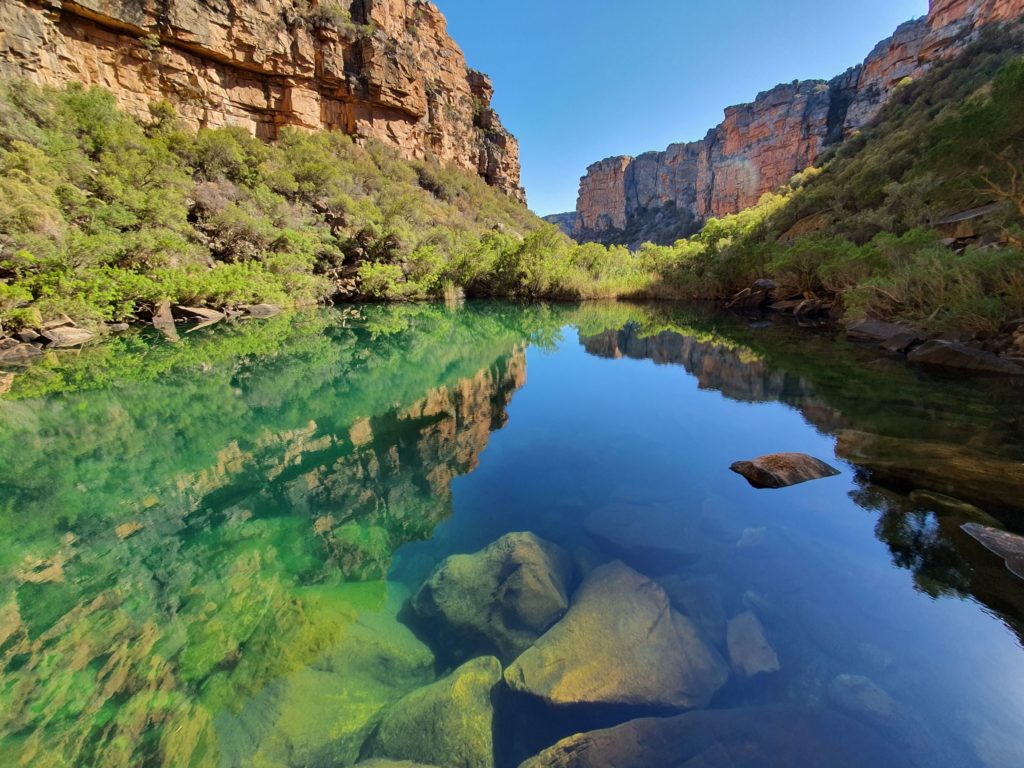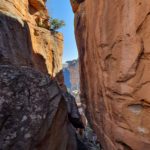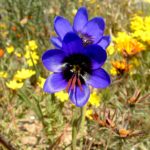A LEGACY OF LAND: PAPKUILSFONTEIN PROTECTED ENVIRONMENT
JP le Roux, Field Officer , Drylands Conservation Programme, [email protected]
The proposed Papkuilsfontein Protected Environment is situated in the Northern Cape Province of South Africa. The farm forms part of the Global Environment Facility (GEF) 5 Sustainable Land Management (SLM) initiative implemented by the Endangered Wildlife Trust’s Dryland Conservation Programme and funded by the United Nations Development Programme and Department of Environment, Forestry, & Fisheries.
The GEF 5 project promotes innovative approaches to protecting the vulnerable ecosystems in the dryland areas. Most farms in the drylands rely solely on agricultural income, which makes them particularly vulnerable to adverse climatic conditions, such as the current drought. One of the ways the project assists farmers, is through encouraging diversification of farming activities that are not weather dependent and that can help build economic resilience in the face of negative environmental and economic conditions.

An SLM exchange is used as one of the strategies to implement projects. The latter is an arrangement where the EWT offers assistance to the farmer, in exchange for an SLM commitment. A Small Grant (SG) is made available to fund an SLM project that the farmer wishes to implement. In exchange for this, the farmer must actively contribute to the implementation of the project, usually in the form of materials or labour. In addition, the farmer must also make a land management commitment, normally this will entail the implementation of certain practices, management plans or conservation actions on the property.

In the case of Papkuilsfontein, the Van Wyk family applied for assistance to develop a network of mountain bike trails on the farm to complement their existing guest farm accommodation. The mountain bike trails will contribute to existing activities and will draw a new tourism segment to the farm. This will bring about more visitors which will translate into economic benefits and jobs. In exchange for this benefit, enabled by the Small Grant, the Van Wyk family has agreed to declare their farm a Protected Environment. The declaration process represents a collaboration between the landowner, the Northern Cape Department of Agriculture, Environmental Affairs, Land Reform and Rural Development’s Provincial Biodiversity Stewardship Programme, and the Endangered Wildlife Trust.
Papkuilsfontein will serve as a flagship project to demonstrate the effectiveness of diversifying income streams, as well as actively integrating a biodiversity conservation approach in a living working farming landscape. The Van Wyk family has been farming on this farm for more than six generations and this has always been done with the mindset of conserving this biodiversity hotspot.
What makes Papkuilsfontein such an important area to conserve, is that it lies on the Bokkeveld Plateau, which is known as the bulb capital of the world. More than 1350 species of flowering bulbs occur here. In some areas the density of bulbs reaches more than 20,000 plant per square meter, more than anywhere else on earth.
Four main vegetation types can be found on Papkuilsfontein, Bokkeveld Sandstone Fynbos, Nieuwoudtville Shale Renosterveld, Hantam Karoo and a small area of Vanrhynsdorp Shale Renosterveld. Each of these vegetation types contains a myriad unique species. Approximately 3000 species occur on the Bokkeveld plateau, with high levels of species endemism. More than 80 endemic species can be found here, most of the endemics are geophytes, together with a few succulents and shrubs. More than 30% of the endemics are Red Data species threatened with extinction.


The amazing species richness of the area makes it a high priority to conserve. Looking forward, innovative approaches to protect areas like this will become more important for sustaining farming, tourism and conservation. We are proud to work with conservation champions such as the Van Wyk’s. The success of the project will encourage other farmers to diversify their activities, reduce their risk and conserve biodiversity on their farms. Watch the video of the project here
For more information visit Papkuilsfontein Website

Biodiversity gems on Papkuilsfontein
Besides the incredible botanical biodiversity, Papkuilsfontein is home to 36 mammal species recorded so far, including leopard, black backed jackal, silver fox, bat eared fox, Smith’s red rock rabbit, porcupines, duiker, Cape Clawless otter, pole cat, baboon, rock hyrax, klipspringer and kudu.
Bird species are well represented, with Blue Crane, Lesser Kestrel, Ludwig’s Bustard, Martial Eagle, Black Shoulder Kite, Jackal Buzzard, Cape Pheasant, Namaqua Grouse, Egyptian Goose, Spurwing Goose, Namaqua Pigeon, Rock Pigeon, Bokmakierie, Fiscal Shrike, and Cape Sugarbird all occurring here. Breeding pairs of Vereaux’s Eagles, Blue Cranes and Black Harriers have been recorded on Papkuilsfontein. The Rameron Pigeon, Cape Flycatcher and Southern Water Shrike may also occur along the riverine vegetation. Oorlogskloof Nature Reserve, which borders Papkuilsfontein, has recorded 152 species of birds, most of these probably occur on Papkuilsfontein as well.
Reptiles recorded on the farm include the Angulate Tortoise, Mountain Tortoise, as well as ten lizard, agama and gecko species. The most common snakes in the area include the Black Spitting Cobra, Boomslang, Cape Cobra, Rhombic Egg Eater, Skaapsteker and Whipsnake. Four frog species are found in the adjacent Oorlogskloof River and may occur in the rivers of Papkuilsfontein.
Invertebrates found on the farm include many species of bees, flies, beetles, moths, and butterflies. Many of these are important pollinators and have unique interactions with specific flowering plants. These insects include long-tongued flies that are the important pollinators of species such as Babiana.
